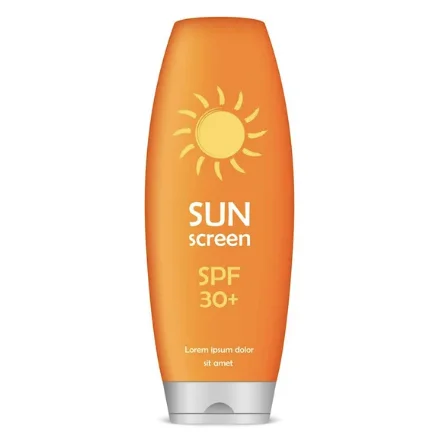The Importance of Sunscreen

Sunscreen: Protecting Your Skin from Harmful UV Rays
Introduction: In today’s world, where we are exposed to increasing levels of ultraviolet (UV) radiation, protecting our skin has become more important than ever. Sunscreen plays a crucial role in safeguarding our skin from the damaging effects of UV light. In this comprehensive article, we will delve into the various aspects of sunscreen, including the types available, the science behind UV light and its impact on the human skin, and the significance of sun protection in different geographical areas. So, let’s explore the world of sunscreens and discover the best ways to shield our skin.
UV Light Types and Wavelength
Ultraviolet radiation (UVR) can be helpful when used to treat diseases such as psoriasis, but it can also be harmful. It is the leading cause of skin cancers, and causes or worsens several skin disorders. UVR is non-ionizing, but changes the skin chemically by reacting with endogenous light-absorbing chemicals (chromophores), which include DNA, RNA, urocanic acid and melanin. Different types of skin (now conventionally divided into six types) react differently to UVR, and require different degrees protection against the sun.
UV light is an invisible form of radiation emitted by the sun. It is categorized into three types based on wavelength: UVA, UVB, and UVC. The A spectrum (UVA) is long-wave ultraviolet light, from 320 nm to the most violet color perceptible to the eye (about 400 nm) causing premature aging and wrinkling. UVB rays have a medium wavelength and primarily affect the outer layers of the skin, resulting in sunburns. UVC rays have the shortest wavelength and are absorbed by the Earth’s atmosphere, posing less concern for human exposure.
Skin types by their reactions to UV light

Pathophysiology of UV Light and Human Skin
Understanding the interaction between UV light and the human skin is essential for comprehending the importance of sunscreen. When UV rays come into contact with our skin, they can damage the DNA within our skin cells. This DNA damage can lead to mutations and increase the risk of skin cancer over time. Moreover, UV rays trigger the production of free radicals, which contribute to skin aging and other skin-related disorders.
Difference between Black Skin and White Skin in UV Light Effects
It is crucial to recognize that different skin types react differently to UV light exposure. Melanin, the pigment responsible for skin color, provides some natural protection against UV radiation. People with darker skin tones naturally have more melanin, which offers a higher degree of inherent sun protection. However, it is essential for individuals of all skin types to use sunscreen to ensure optimal protection and reduce the risk of sun damage.
Types of Sunscreen
The market offers a wide array of sunscreen options to cater to diverse needs and preferences. Sunscreens can be broadly classified into two categories: chemical sunscreens and physical sunscreens.
- Chemical Sunscreens: Chemical sunscreens work by absorbing UV radiation and converting it into heat energy. They typically contain organic compounds such as oxybenzone, avobenzone, and octinoxate. These sunscreens are lightweight, easily absorbed by the skin, and often provide broader spectrum protection.
- Physical Sunscreens: Physical sunscreens, also known as mineral or inorganic sunscreens, create a physical barrier on the skin’s surface to reflect and scatter UV rays. They contain active ingredients like zinc oxide or titanium dioxide. Physical sunscreens are generally better tolerated by individuals with sensitive skin and provide immediate protection upon application.
When selecting a sunscreen, consider your skin type, preferences, and specific requirements such as water resistance or sensitivity to certain ingredients. It’s important to choose a broad-spectrum sunscreen that protects against both UVA and UVB rays.
What is the Best Sunscreen to Use?
Determining the “best” sunscreen depends on individual needs and preferences. However, several factors can help you make an informed decision:
1. SPF (Sun Protection Factor): Look for a sunscreen with a broad-spectrum SPF of 30 or higher. SPF indicates the level of protection against UVB rays and helps prevent sunburn.
2. Broad-Spectrum Protection:** Ensure the sunscreen provides protection against both UVA and UVB rays to shield your skin from a wide range of harmful radiation.
3. Water and Sweat Resistance: If you engage in water activities or sports, opt for a sunscreen that offers water resistance to maintain protection even when exposed to moisture.
4. Skin Sensitivity:
Individuals with sensitive skin should choose sunscreens labeled as hypoallergenic or formulated specifically for sensitive skin to minimize the risk of irritation.
Remember to apply sunscreen generously and reapply it every two hours or after swimming or sweating heavily to maintain its effectiveness.
Which Geographical Areas are More Affected?
The impact of UV radiation varies depending on geographical location. Areas closer to the equator generally receive more intense UV radiation due to the sun’s angle and atmospheric conditions. Therefore, regions near the equator, such as tropical and subtropical areas, often experience higher UV exposure levels. However, it is crucial to note that UV rays can still harm the skin even in cooler or overcast climates. Regardless of your location, practicing sun protection measures is essential for maintaining healthy skin.
Why Should You Be Protected?
Protecting your skin from UV radiation is vital for several reasons:
1. Skin Cancer Prevention: Prolonged exposure to UV rays is a significant risk factor for skin cancer, including melanoma, the deadliest form of skin cancer. Regular use of sunscreen can significantly reduce this risk.
2. Premature Aging Prevention: UV radiation accelerates the aging process, leading to wrinkles, fine lines, and age spots. By using sunscreen, you can help prevent premature aging and maintain youthful-looking skin.
3. Protection against Sunburn: Sunburns not only cause discomfort but also indicate skin damage. Sunscreen helps prevent sunburns and shields the skin from immediate harm.
4. Maintenance of Skin Health: Sunscreen contributes to overall skin health by reducing the risk of various skin conditions, including sunburn, heat rash, and photodermatitis.
Conclusion
In conclusion, sunscreen is a crucial tool in safeguarding our skin from the harmful effects of UV radiation. By understanding the different types of UV light, the pathophysiology of UV damage, and the variations in skin response, we can make informed decisions about sun protection. Remember to choose a suitable sunscreen that offers broad-spectrum protection, consider your skin type and specific needs, and apply it generously and consistently. Whether you reside in a sun-drenched region or a cooler climate, prioritizing sun protection measures will help you maintain healthy, radiant skin. So, embrace the power of sunscreen and let your skin shine while staying safe.






Responses